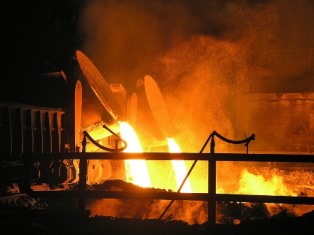Nature of matter & chemical change

 1.1 Particulate nature of matter and chemical change (2.5 hours)
1.1 Particulate nature of matter and chemical change (2.5 hours)
Pause for thought
One of the examples given for ‘Utilization’ for this sub-topic is 'Atom Economy'. Although atom economy cannot really be examined under this sub-topic is does appear on the main syllabus in the core part of both Option A - Materials (A.5 - Polymers) and Option B: Biochemistry (B.6 - Biochemistry and the environment). It should also probably be mentioned when Green chemistry is discussed in the core part of Option D: Medicinal chemistry (D6 - Environmental impact of some medications). For this reason it is an important concept and is worth discussing during this sub-topic.
In chemical synthesis it is desirable not only to obtain a high yield but also to achieve the highest conversion efficiency to avoid waste. The conversion efficiency is known as the atom economy. It is a measure of the amount of starting materials that become useful products. A high atom economy means that fewer natural resources are used and less waste is created.
To calculate the atom economy use the following steps:
1. Write the balanced equation for the reaction taking place.
2. Calculate the relative molecular mass of each product and then the total mass of each product formed assuming molar quantities. Note that this is the same as the total mass of the reactants.
3. Calculate the relative molecular mass of each desired product and then the total mass of each desired product formed assuming molar quantities.
4. Atom economy = (total mass of desired product(s) ÷ total mass of all products) x 100
 For example, consider the production of iron by the reduction of iron(III) oxide using carbon monoxide in a blast furnace
For example, consider the production of iron by the reduction of iron(III) oxide using carbon monoxide in a blast furnace
Fe2O3(s) + 3CO(g) → 2Fe(s) + 3CO2(g)
The total mass of products formed = 2 x 55.85 + 3 x [12.01 + (2 x 16.00)] = 243.73 g
The total amount of iron (the desired product) formed = 2 x 55.85 = 111.70 g
The atom economy for this reaction is 111.70 / 243.73 x 100 = 45.8%
Obviously if a use can also be found for the carbon dioxide then the atom economy for this particular reaction will increase. Alternatively the atom economy for the industrial process could be improved, as it is in modern blast furnaces, by using hydrogen as the reducing agent.
Nature of Science
This sub-topic stresses both the importance of language in chemistry and the reliability and replication of quantitative measurements upon which chemical equations are based.
In the early nineteenth century John Dalton (1766–1844) set out values for atomic weights (now atomic masses) of the elements and showed, by making careful and accurate reproducible measurements, that two elements (A and B) combine to make a compound in one or more set ratios, AB, AB2 A2B etc. This paved the way for chemical formulas and chemical equations.
Learning outcomesAfter studying this topic students should be able to: Understand:
Apply their knowledge to:
| Clarification notesA variety of different types of reactions should be included when balancing equations. The different names used for changes of state include melting, freezing, vaporization (evaporation and boiling), condensation, sublimation and deposition. International-mindednessThe use of chemical symbols and equations are international. This means that scientists can effectively communicate with each other without the need for translation. The International Union of Pure and Applied Chemistry (IUPAC) is the world authority in developing standardized chemical nomenclature for both organic and inorganic compounds. |
Teaching tipsMost students will already have covered much of this sub-topic by the time they start the Diploma Programme. What I usually do is give them the lab ' Common chemical reactions' to do practically. This covers many of the basic reactions such as neutralisation and simple precipitation. It is useful for those who are non-native English speakers and it also provides students with practice at writing normal and ionic equations. It also gives several key reactions, such as the addition of an acid to a carbonate, which can be used to work out quantitative problems for the sub-topics that follow. When describing the difference between homogenous and heterogeneous it is useful to introduce the idea of a phase rather than just say that the components of a mixture are in the same or different states. You can use oil and water as an example of a heterogeneous mixture where both of the components are in the same state but are in a different phase. | Study guide
Page 1 QuestionsFor ten 'quiz' multiple choice questions with the answers explained see MC test: Nature of matter & chemical change. For short-answer questions which can be set as an assignment for a test, homework or given for self study together with model answers see Nature of matter & chemical change questions. Vocabulary listmelting (point) IM, TOK, utilization etc.See separate page which covers all of Topic 1 Practical work |
Teaching slides
Teachers may wish to share these slides with students for learning or for reviewing key concepts.
Other resources
1. A video produced by the Chemical Heritage Foundation on how John Dalton discovered atoms, determined their atomic weight and laid the basis for the use of chemical equations to describe reactions.
2. States of matter. A simple description of the four states of matter, i.e. it also includes the plasma state.
3. A video by Fuse school - Global education that clearly explains Atom economy .

 IB Docs (2) Team
IB Docs (2) Team 



























